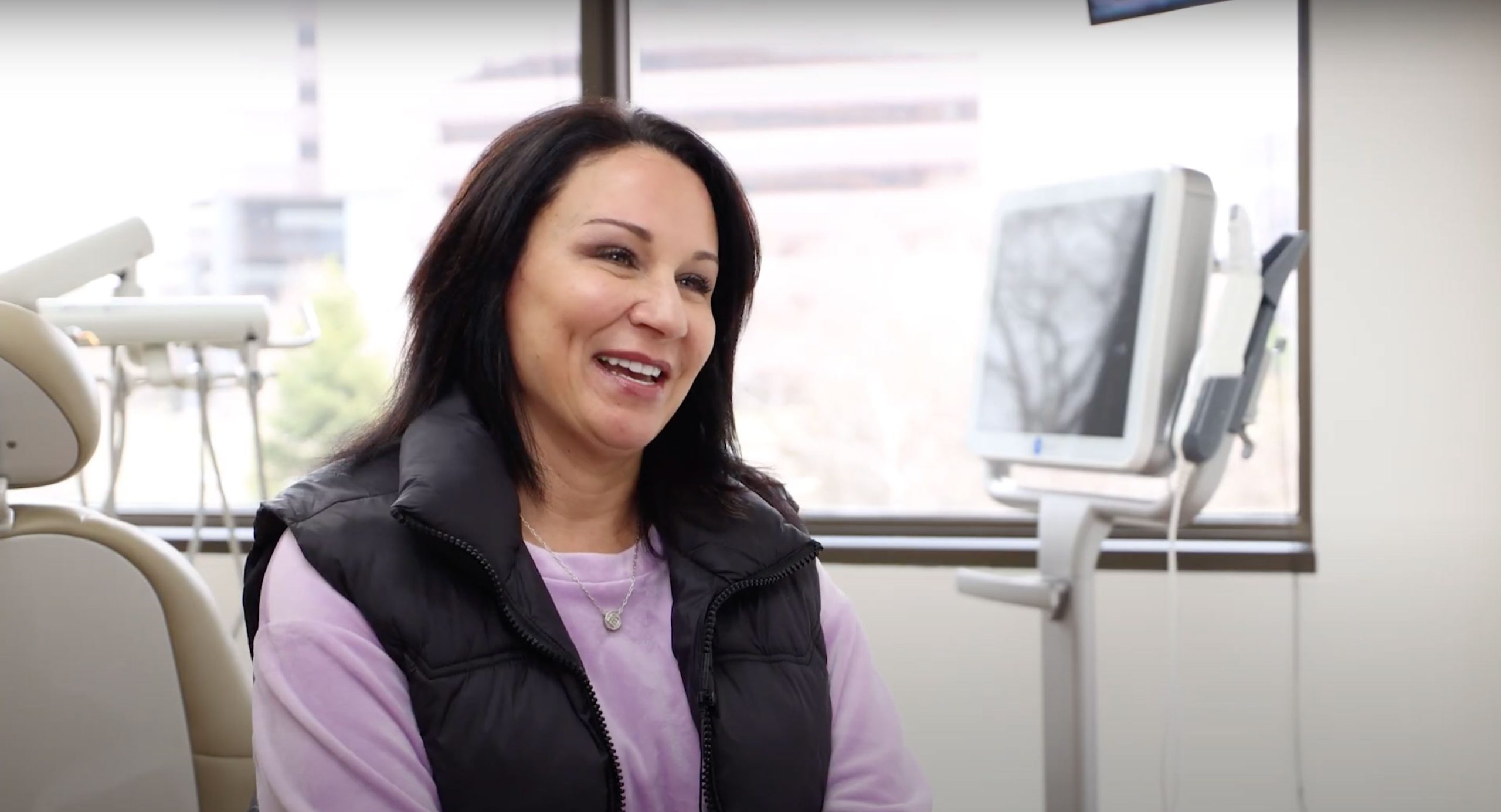Because Feeling Confident in Your Smile Matters
Our compassionate team, equipped with advanced technology and artistry in dental aesthetics, is here to offer bespoke treatments that fit your unique needs. From brightening your teeth to reshaping or repairing them, the possibilities are endless. We’re committed to providing an environment where you feel heard, valued, and comfortable as we transform your smile into one you’ll love to share. Discover the art of cosmetic dentistry with us.
We Believe Healthy Gums Make Happy Smiles.
Understanding Gum Disease and Its Treatment
Gum disease, also known as periodontal disease, involves the inflammation or infection of tissues surrounding the teeth. It’s often painless, so you may not know you have it until there’s significant damage. At Hamilton Lakes Dentistry, we strive to catch gum disease early and treat it effectively. Here’s how we address this common issue:
Signs and Progression
Gum disease starts as gingivitis, marked by red, swollen gums that bleed easily. At this stage, damage is reversible with proper care. If untreated, it can progress to periodontitis, where deep pockets form as gums separate from teeth. This allows bacteria to destroy supporting tissue and bone.
Treatment Options
Scaling and Root Planing: A deep cleaning method that removes plaque and tartar from below the gumline, smoothing root surfaces to prevent further bacterial growth.
Antibiotic Therapy: After cleaning, antibiotics may be applied to the gums to combat infection and promote healing.
Laser Treatment: Advanced laser techniques allow for precise removal of inflamed tissue, helping to reduce bacteria and promote reattachment of gums.
Gum Surgery: When nonsurgical methods aren’t enough, surgical options, such as flap surgery or grafts, may be necessary to restore gum health and prevent tooth loss.
Regular professional cleanings and good oral hygiene practices at home play a crucial role in managing and preventing gum disease. Our team is here to support you in maintaining gum health and preventing future issues.
Learn More About Gum Disease from the Experts at Hamilton Lakes Dentistry

How Does Cosmetic Dentistry Transform Your Confidence and Self-Esteem?
Treating gum disease has profound effects beyond oral health—reducing the risk of tooth loss, enhancing breath, and even lowering the risk of systemic health issues linked to periodontal infections. With treatment, you can speak, eat, and smile with confidence, knowing your gums are strong and healthy.
Start with a consultation at Hamilton Lakes Dentistry to explore personalized treatment options. Contact us today—let’s protect your smile and your health together.
The Hamilton Lakes Dentistry Gum Disease FAQ
Welcome to our FAQ section, where we address common questions about gum disease and its treatment. Understanding this condition is vital for ensuring your oral health.
What is Gum Disease?
Gum disease is an infection of the tissues that hold your teeth in place, often due to inadequate brushing and flossing habits that allow plaque to remain on your teeth and harden.
How Can I Prevent Gum Disease?
Prevention involves maintaining a regular oral hygiene routine, including brushing twice daily, flossing, and using antiseptic mouthwash. Regular dental check-ups are essential to catch signs of gum disease early.
How is Gum Disease Treated?
Treatment depends on the disease’s progression. Initial stages may only require improved hygiene and professional cleanings, while more advanced stages could need scaling, root planing, or surgery.
What are the Risks of Ignoring Gum Disease?
Ignoring gum disease can lead to more severe health issues, including tooth loss, and has been linked to heart disease and diabetes. It’s crucial to address symptoms promptly.
What Do Patients Say About Gum Disease Treatment Here?
Patients often express relief after treatment, citing improvements in comfort and confidence. One patient shared, “I didn’t realize how much gum disease was affecting my life until I received treatment and experienced the difference.”
How Can I Start My Treatment Journey?
the first step toward healthier gums is a consultation with us. Call Hamilton Lakes Dentistry at 630-773-6966 to schedule an appointment and take charge of your gum health.
Begin Your Journey to Healthier Gums Today
A healthy, vibrant smile begins with healthy gums. At Hamilton Lakes Dentistry, we prioritize your gum health with expert, compassionate care. Contact us at 630-773-6966 to schedule your consultation and start your path to better gum health, ensuring your smile reflects your best self now and in the future.




